Wabi Sabi Stoic Photography II
Field Notes III.XII: Exploring a philosophical and aesthetic motif in photography
Welcome to Field Notes!
What do we know?
To say this pursuit of Wabi Sabi Stoicism is challenging would be a great understatement. As I start down this path I am immediately confronted by how much I am assuming and how little I actually know. While I believe my own interpretations of these traditions have validity on their own, I must tread lightly and not present my personal thoughts as authoritative.
So, to that end, I have been reading. At this point I will have to rely on others’ definitions and descriptions of these traditions. Many of my sources are online articles, and I will try to reference them as thoroughly as I can. Also, I have gotten a new copy (can’t find my old one) of Wabi-Sabi for Artists, Designers, Poets & Philosophers by Leonard Koren. This book provides a very straightforward overview of the wabi sabi aesthetic and I will reference it frequently.
My starting point for what I know is the following. Wabi sabi has been intimately tied to Zen Buddhism almost since its beginning. It may, in fact, be the aesthetic expression of Zen philosophy. I have a superficial understanding of wabi sabi from my past interest in Japanese culture and history, but I know very little about Zen philosophy.
On the other hand, we have Stoicism. Stoic aesthetic ideals may be expressed in the concept of ‘summetria’ as an expression of Stoic philosophy. From the term ‘summetria’ we derive the word ‘symmetry,’ but there is much more going on in this concept than this simple translation would imply. I know a little bit about Stoic philosophy, specifically ethics, but I have learned very little about Stoic aesthetics and summetria. I will refrain from trying to describe anything about it until I have studied this more.
What is the difference?
Our premise here is that these two distinct traditions manifest aesthetically in ways that are surprisingly in alignment with one another. This alignment is fitting to the extent that the goal here is to try to combine the two for a potentially synergistic crafting of philosophical art.
Before we can do this, we must ask a fundamental question. If these two concepts have such similar characteristics, what is the difference between wabi sabi and Stoic aesthetics?
For now let’s acknowledge the most obvious, that these traditions are derived from vastly different cultural backgrounds. We could spend days discussing the differences between the Eastern and Western points of view, but to dive fully into that is beyond the scope of this essay. At least for today.
For now, I would like to point out one primary and major point of difference stemming from these two different cultural points of view. First, consider Stoicism-
In our control is the most beautiful and important thing, the thing because of which even the god himself is happy— namely, the proper use of our impressions.
- Gaius Musonius Rufus
What Rufus is describing here is what Epictetus calls the Discipline of Assent. We are all hit with impressions, but we have rational control over whether or not we assent to them. This is, in fact, the only thing truly within our control. Rationality, as embodied and expressed through virtue, is what sets us apart as human and its perfection is the ideal. In this statement Rufus equates our rationality and virtue with the “most beautiful.”
Wabi sabi, and its root philosophy Zen Buddhism, stand in stark contrast to this perspective-
One of the major themes of Zen is strident anti-rationalism. Essential knowledge, in Zen doctrine, can be transmitted only from mind to mind, not through the written or spoken word.
- Leonard Koren
Here we have essentially an Eastern, more esoteric approach. This is why wabi sabi is a mysterious concept that is elusive to precise definition. We can speak to its qualities, but it is something to be understood experientially and not necessarily with a logical mind.
So how is it possible that a rational and non-rational system come to very similar conclusions on aesthetics and beauty? According to the Merriam-Webster Dictionary, the definition of beauty itself is nuanced-
the quality or group of qualities in a person or thing that gives pleasure to the senses or the mind
Or the mind. That is our key point. Though they approach from opposite ends of the spectrum, I think both of these traditions seek to find beauty and aesthetic value beyond what is physically appealing. The Stoics would actually categorize physical beauty as a preferred indifferent. Wabi sabi might go further to say it is just indifferent, or perhaps dispreferred. The value is in the essence of the thing. Its virtue. We are seeking an aesthetic of inner beauty.
Via Negativa
I’ve made it clear that I am learning as we go along. So, the next question becomes- is it possible to hit the mark without yet knowing exactly why? I think, maybe, yes. The reason is that we can begin to understand something by knowing what it is not.
Wabi-sabi is not found in nature in moments of bloom and lushness, but at moments of inception or subsiding. Wabi-sabi is not about gorgeous flowers, magestic trees, or bold landscapes. Wabi-sabi is about the minor and the hidden, the tentative and the ephemeral: so subtle and evanescent they are invisible to vulgar eyes.
- Leonard Koren
Would the Stoics agree? Stoicism promotes living ‘in accordance with Nature,’ acknowledges the impermanence of all things, and upholds an aversion, or at least an indifference, to the ornate. So yes, at least as far as I know today, this is in line with Stoic ideals.
From my own experience since beginning this path, I’ve learned the following additional insights-
This isn’t just about old, broken things. The first thing I did chasing this theme was drive around looking for old barns and abandoned houses to photograph. That is an outward physical condition and too superficial.
This isn’t only about the turning of the seasons. It is the beginning of the spring right now. I’ve photographed buds, sprouting leaves, and flowers in search of Wabi Sabi Stoicism and not quite found it. There must be more to it than that.
Though Wabi Sabi Stoicism would acknowledge the cycle of death, decay, and rebirth, this isn’t about the grotesque. A photo of a gaggle of vultures pecking at road kill would likely not evoke these ideals.
I love some dark and moody images, but again that quality is only a component of what I am after. Dark and moody doesn’t equal Wabi Sabi Stoicism.
What we are looking for is a subject, a scene, or a composition that makes a statement. It asks questions that cannot be answered. It speaks of a history we cannot know. It exudes the excellence of inner quality above physical appeal, leaving us with a renewed perspective on what is sublime.
Are we getting an idea of what this is about yet? Are we shaping the clay into something recognizable? With these things in mind, let’s look at some photos!
Then
First we will pan for gold in my archives. Keep in mind, these are images that just may happen to catch the qualities of Wabi Sabi Stoicism. I took these well before starting the path, though, so any success in that achievement is accidental.
Texture is king in this image. I chose the black and white format specifically to highlight that quality. This was taken in early March of 2022 on a trip to Savannah, Ga for my wife’s birthday.
This is an old stairway, dating from the 1700’s, leading up a high wall from River St, along the Savannah River. Though weathered and well used, those precisely cut blocks still stand the test of time. In contrast to their roughness, you can almost feel the cool smoothness of the iron railing ascending them. In the midst of it all there is life in the form of thriving ferns, growing from impossibly small crevices.
I believe it is fairly easy to see both wabi sabi and Stoic themes in this image. Another less obvious element that I like is how we do not know exactly where these stairs originate from or where they lead. It suggests an ongoing process of ascending or descending with mystery in front and behind. Such is life.
I took this photo in January of 2024 when I took my mom to Green Bough House of Prayer in central Georgia. The first thing I notice in the image is the color temperature difference. Outside the window looks cold. Many trees are bare, and the few leaves remaining are brown. Yet that chair, at least at first, looks warm and inviting. Can you hear the wicker creak when its sat on?
Upon closer inspection, though, this photo suggests the juxtaposition of life and death. That plant on the left is so vibrant and thriving in the light! But we recognize that the chair that looked so warm at first is still and unmoving. Who sat there, and where have they gone? It is conspicuously empty…
Do you feel it too? To me this photo evokes a word that I cannot quite pinpoint. Mournful? Nostalgic? Simply sad? I can’t quite say. At one point Leonard Koren uses the term “the sad-beautiful feeling of wabi-sabi.” Does this image evoke that?
Now
Now it is time to look at some daffodils! I took these photos in the late February/early March time frame. The daffodils are among the earliest flowers to arise in spring. They naturally drew my attention as I considered how Wabi Sabi Stoicism might be embodied in the changing of one season to another.
These are deliberate attempts at Wabi Sabi Stoicism. But, as mentioned above, it is like trying to hit a target without fully understanding what the target is. Or maybe like trying to describe a partially unveiled thing. I will describe my thoughts about these images. I ask you to decide for yourself how close they come. Consider this first attempt-
These daffodils arise every year on their own accord in my back yard. I was observing them over the course of a few days and saw that at a certain time of morning the low angle of the morning sun streamed through the still leafless trees to shine on certain blooms while leaving other areas nearby in deep shadow.
I know that wabi sabi would not normally be manifest in fully blooming flowers, but these are guidelines, not hard and fast rules. What struck me was the transience of it all. Daffodils stick around for such a short time in the early spring. This sunlight shining on them will only last a few minutes before the shadows that allow them to stand out dwindle.
To me, these photos scream ‘nothing lasts!’ However, this could be just me, because I know these daffodils and I know the light, and maybe that knowledge is part of the Zen of it all. What do you think?
Rain came. And with it a dip back into winter weather. Here we see some of the same daffodils, just a few days after the first two images of them. These may be more in line with the classic idea of wabi sabi. The wilted flowers speak of a former glory, now well past its prime.
The droplets of water and lushness of the green foliage show a health and flourishing in contrast to the sagging blooms. Will they recover, or is this the conclusion of their cycle of existence?
My thought is that all of the above photos may catch some qualities we are seeking, but do not quite achieve the overall aesthetic. The full radiant blooms in the first two may actually be too much. They all lack an important amount of minimalism.
Let’s take a look at one more-
This final image of daffodils is one I serendipitously found while driving around. It was in front of a tiny house right along a small but fairly busy road. I had to park a driveway away and creep carefully along the shoulder as cars whizzed past to get to the point of view of this photo.
What I like here is the strong contrast of the flowers and the blocks. The daffodils arise vigorously from concrete block, growing in front of more block, brick, and wood. They demonstrate the excellence of being daffodils to the best of their ability in the midst of apparently stark and challenging circumstances. This speaks to me much more of Stoicism than wabi sabi, but I think it is nearing the mark.
More to follow.
I’ve taken a lot of photos already for this Wabi Sabi Stoicism project. Many are photos I really like, but just don’t live up to the challenge. So, if you’ve read this far, now it is your turn. Are you starting to understand the concepts and what we are trying for? How are these photos achieving that or not? Let’s discuss-
Here are some ways to support my work in Field Notes-
Remember, paid supporters receive select images for free and 50% off of the others.
Also, if you would like to support my upcoming thru hike of the Bartram Trail, you can send me some trail magic here-
https://www.paypal.com/ncp/payment/H2YDNBQZSJP6A
Proceeds go towards provisions and re-supply, fuel, emergencies, etc. I can give a shout out for your support, or not. Let me know!


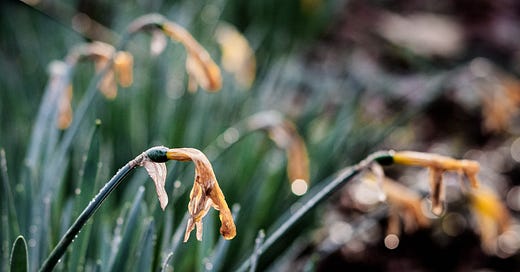




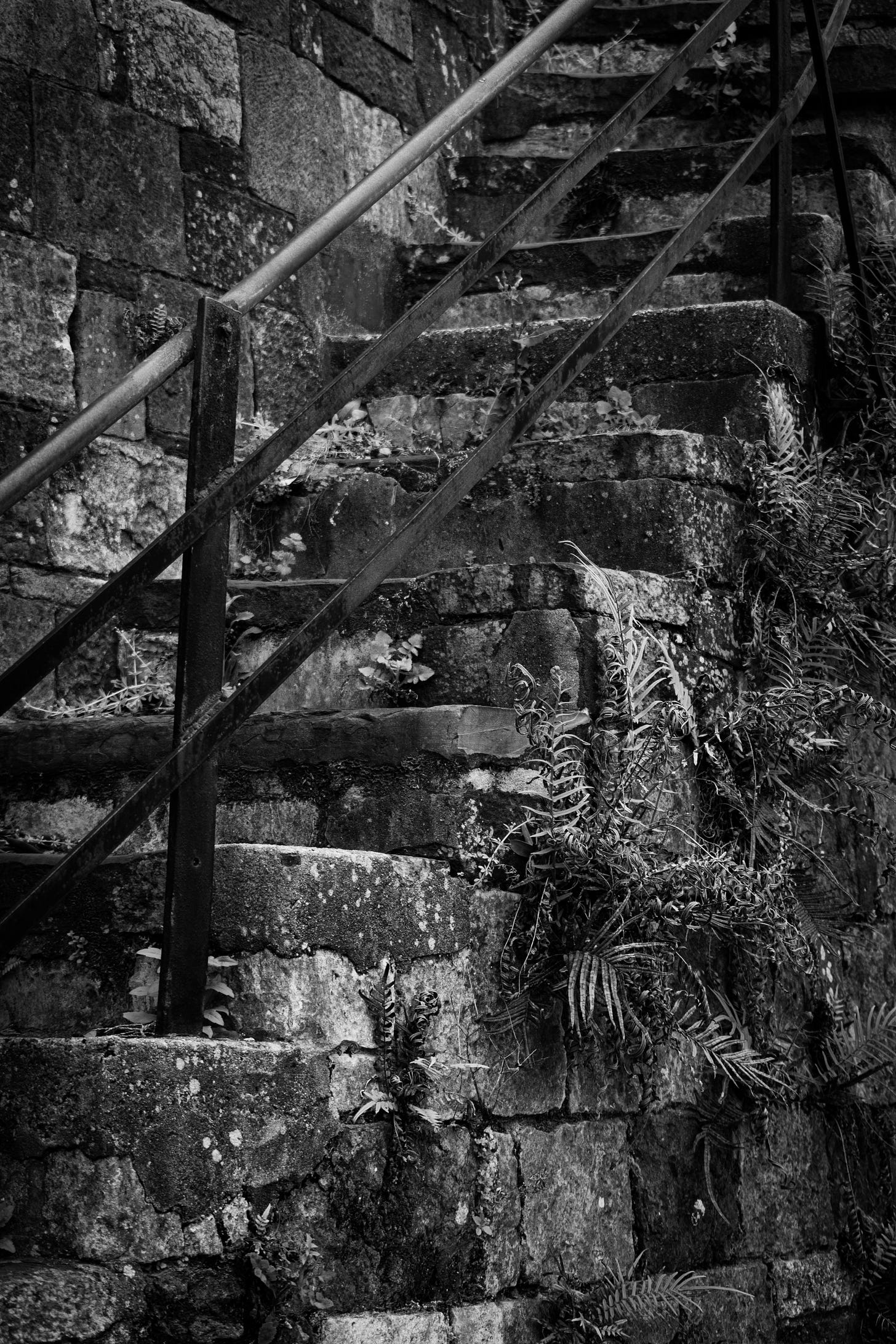
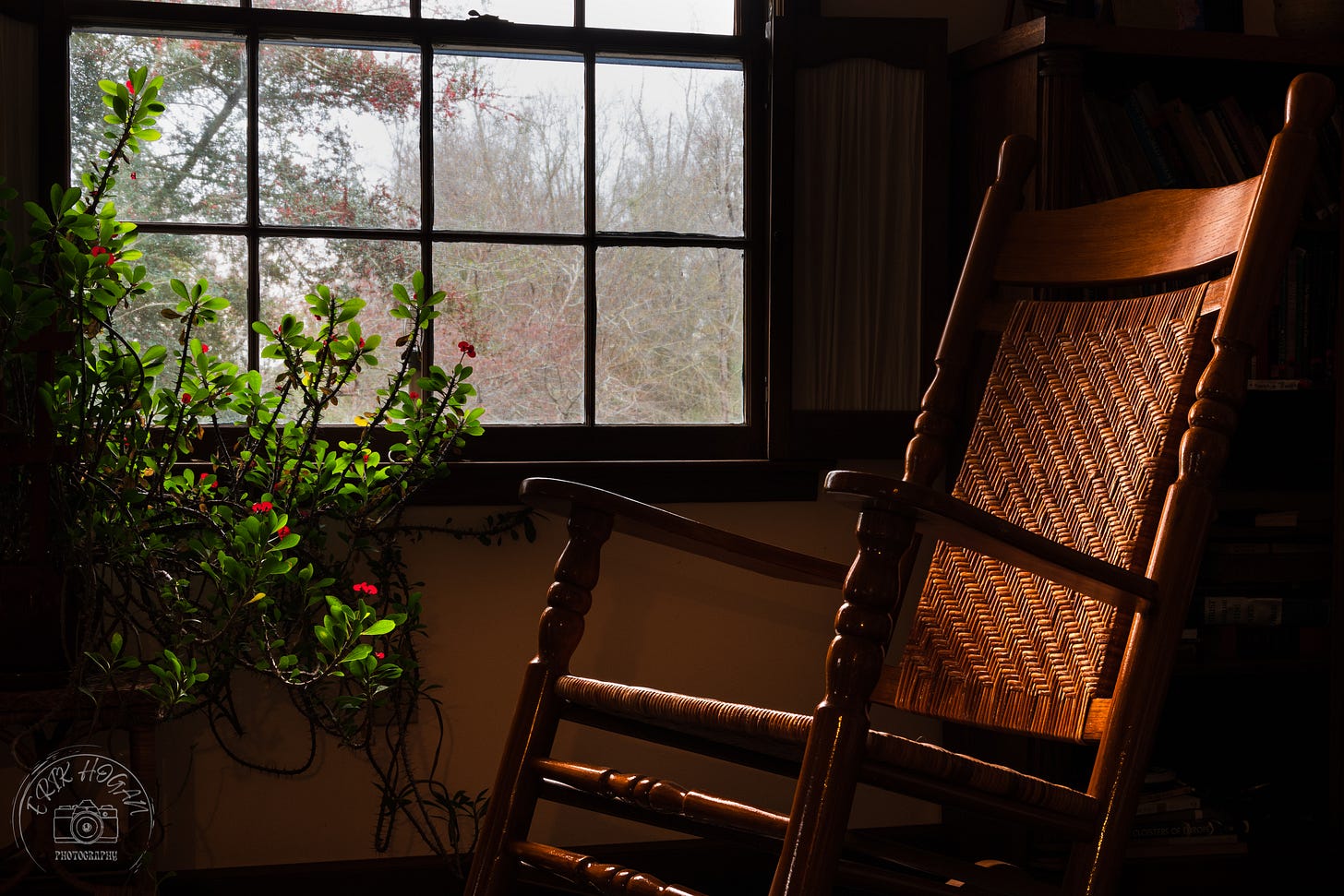
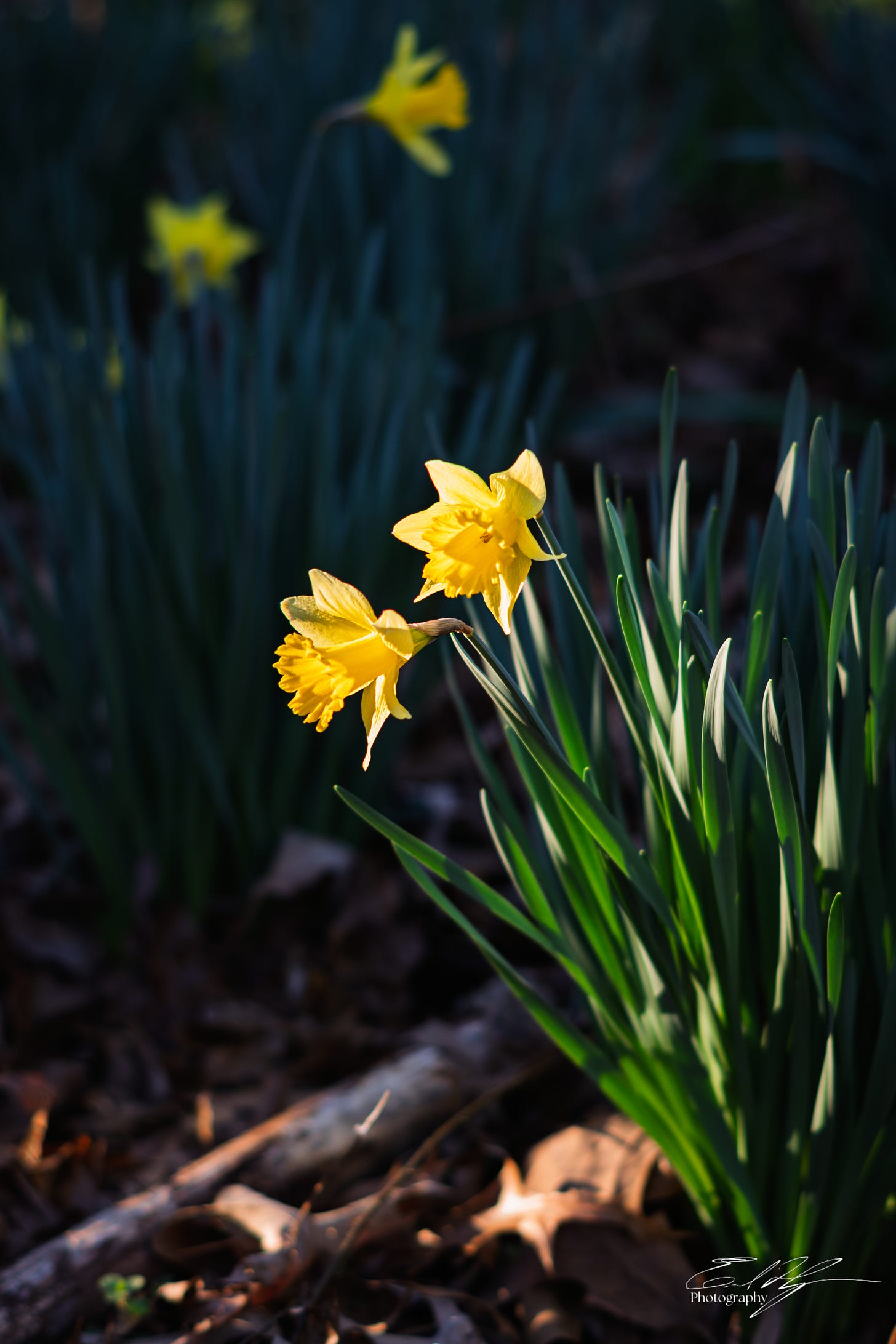
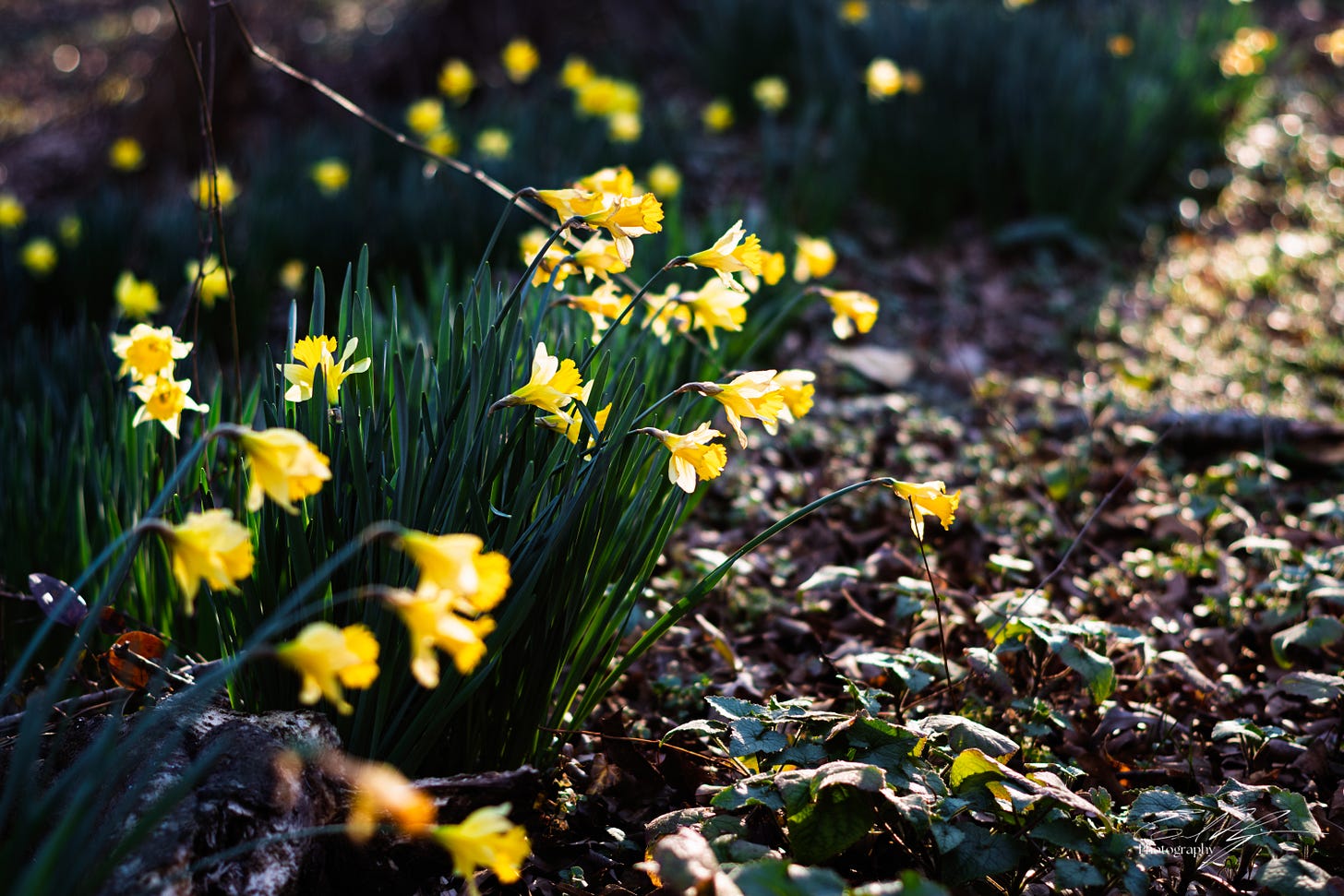


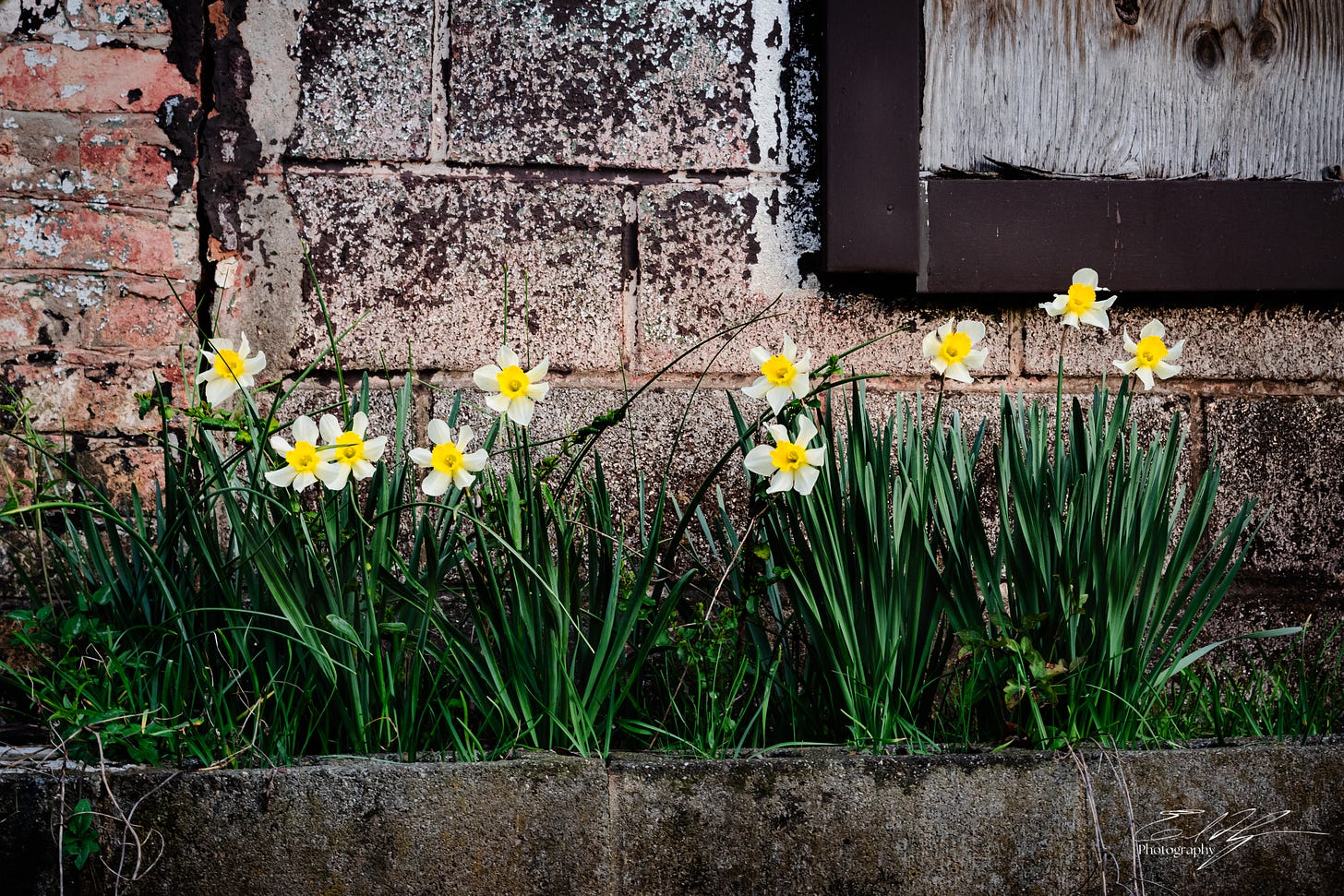




Fascinating Erik. It is interesting when different groups come around to common ways of thinking about the world (convergent evolution?). I think I am struggling most in imagining Stoic aesthetics - I look forward to learning more.
Beauitful photos Erik! Long before Wabi Sabi became a thing, the great 20th century photographer Irving Penn, published a book titled "Flowers," that featured some stunning flower photography that included flowers that were past their prime. I loved that book, had a copy and it was stolen. It was a great inspiration to me then, in the mid-80's and still today.
I love the old growth on the stone steps in black and white. Inspiring work, my friend.